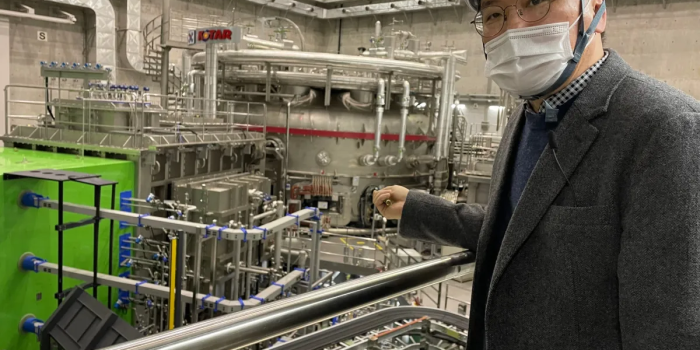Hailed as the Korean Sun, Superconducting Tokamak Advanced Research (KSTAR) in Korea has achieved a breakthrough in fusion reactor technology. It can maintain plasma containment for over 100 seconds and fusion temperatures for over a minute.
Because of the different gravitational fields between Earth and other celestial bodies, the fusion process, which powers stars, requires extraordinarily high temperatures to begin on Earth. Like a donut-shaped reactor, the Tokamak system requires temperatures about seven times higher than the Sun’s core, or about 100 million °C (180 million °F).

KSTAR has been gradually expanding its capabilities since 2018. After only 1.5 seconds to cross the fusion barrier in the first year, they significantly improved in the following years. For 30 seconds in 2021, the plasma temperature remained at fusion levels. Thanks to recent modifications, KSTAR can now sustain the hot plasma in the high-confinement mode for 102 seconds and reach fusion temperatures for 48 seconds. The director of the KSTAR Research Center, Dr. Si-Woo Yoon, attributes the record-breaking performance to careful planning and hardware improvements.
The ultimate goal is to achieve 300 seconds of burning plasma by 2026. This will require ongoing improvements to present drive devices and heating systems and the securement of key technologies for high-performance, long-pulse plasma operations.

KSTAR is an essential testbed for fusion technology and tungsten divertors necessary for plasma containment. These experiments and initiatives, like the Joint European Torus (JET), open the door for promising full-scale nuclear fusion reactor prototypes like ITER and DEMO. While DEMO seeks to produce power and twenty-five times the input energy, ITER, expected to begin operations soon, is predicted to yield ten times the energy output compared to input.
The president of the Korea Institute of Fusion Energy (KFE), Dr. Suk Jae Yoo, views these accomplishments as critical to obtaining the essential technologies needed for fusion reactors in the future. With the construction of DEMO expected to start immediately and the completion of ITER, efforts are stepping up to guarantee the sustainability and profitability of fusion energy as a green alternative.


